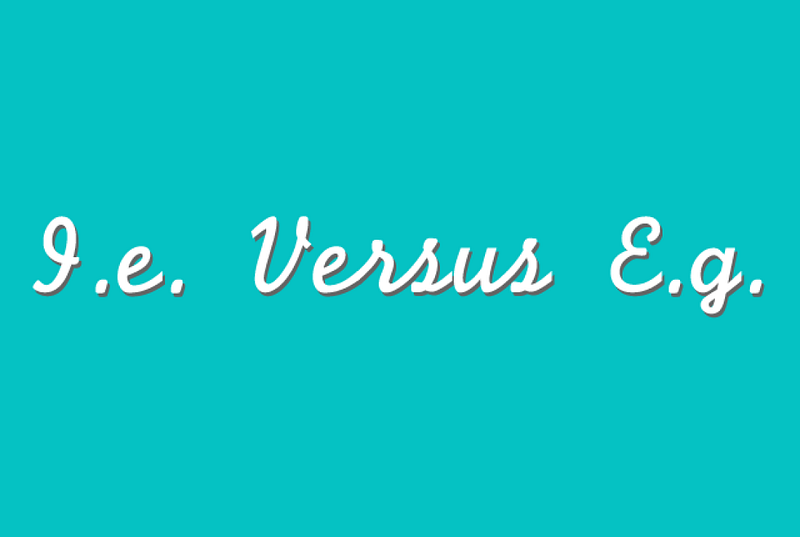What does ‘I.E.’ mean?

What Do I.e. and E.g. Mean?
I.e. and e.g. are both abbreviations for Latin terms. I.e. stands for id est and means roughly “that is.” E.g. stands for exempli gratia, which means “for example.” “Great. Latin,” you’re probably thinking. “How am I supposed to remember that?”
What is the difference between the abbreviations i.e. what’s more, e.g.?
The most looked up abbreviations in our online dictionary are i.e. also, e.g., likely because they are often confused for one another.
Both of these are abbreviations of Latin expressions: i.e. remains for id est, which means “that is” in Latin. It introduces a rewording or a clarification of a statement that has quite recently been made or of a word that has recently been used, for example,
The cough may keep going for a brief period of time — i.e., three to five days.
E.g. remains for exempli gratia in Latin, which means “for example.” It introduces one or more examples that illustrate something stated, for example,
Submit a sample of academic writing — e.g., a dissertation chapter.
Because their usage can seem similar, these abbreviations are often confused. One trick to keeping them straight is to remember that i.e. what’s more, that is both share an i and that example and e.g. both share an e.
You can likewise take a stab at substituting the English for the abbreviation to check:
The cough may keep going for a brief period of time — that is three to five days.
Submit a sample of academic writing — for example, a dissertation chapter.
Another frequently seen Latin abbreviation is et al., which means “and others.” It is generally styled with a period, because the Latin words that it remains for have different possible endings, and et al. is the root: et alii (masculine), et aliae (feminine), and et alia (neuter). Since English things don’t have grammatical gender, et al. makes for a comprehensive version of “and others.”

Comments
Post a Comment